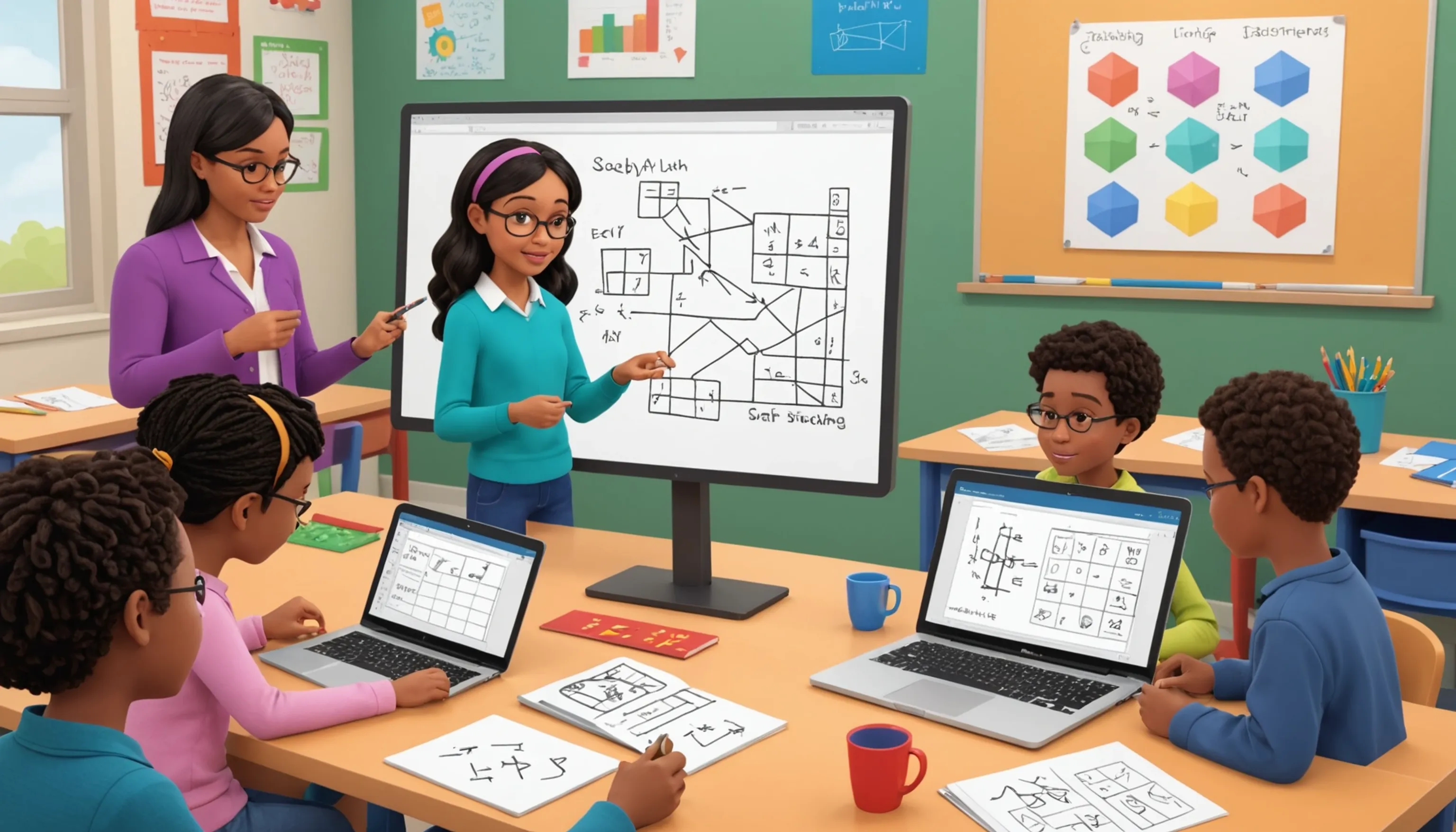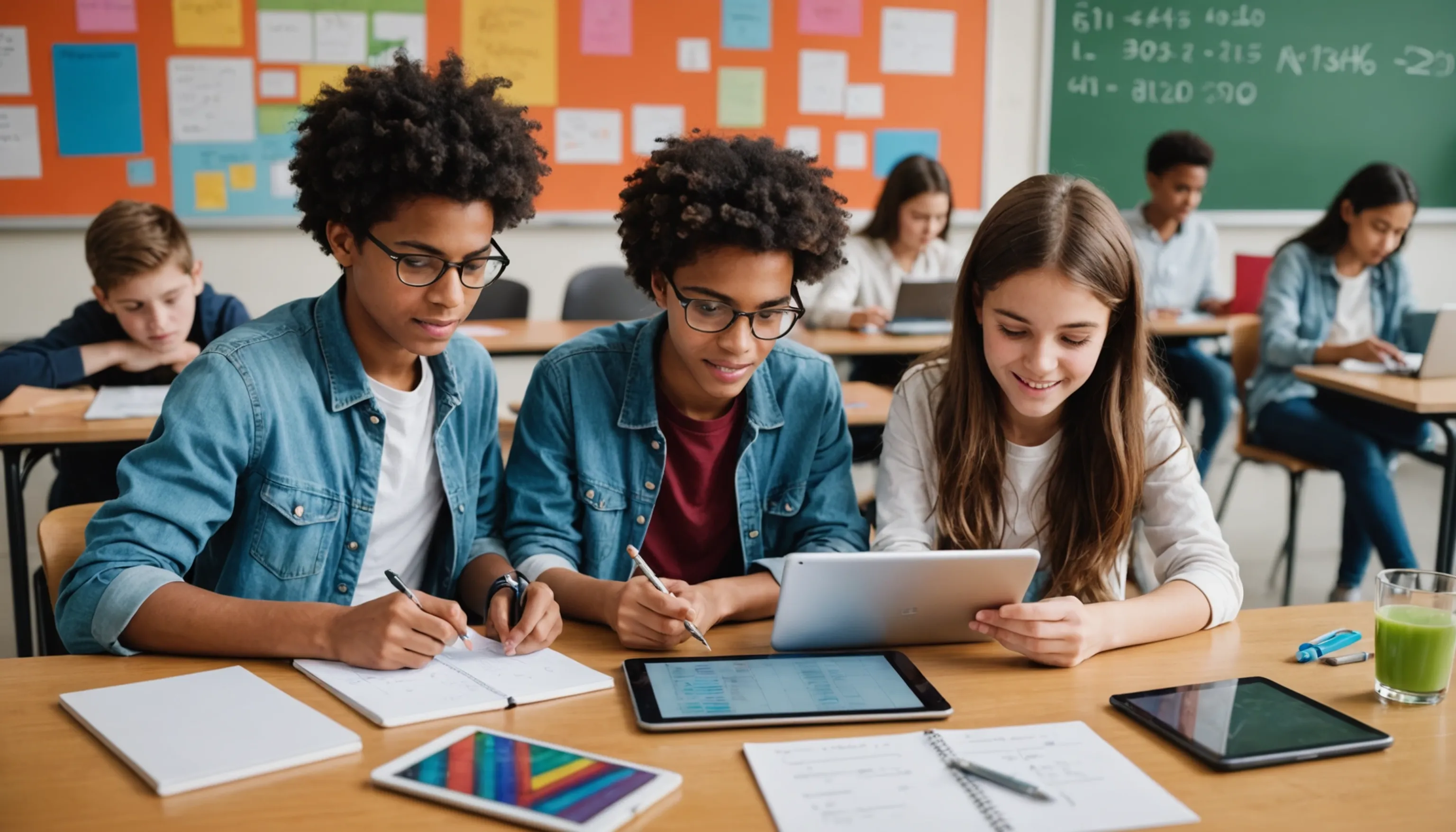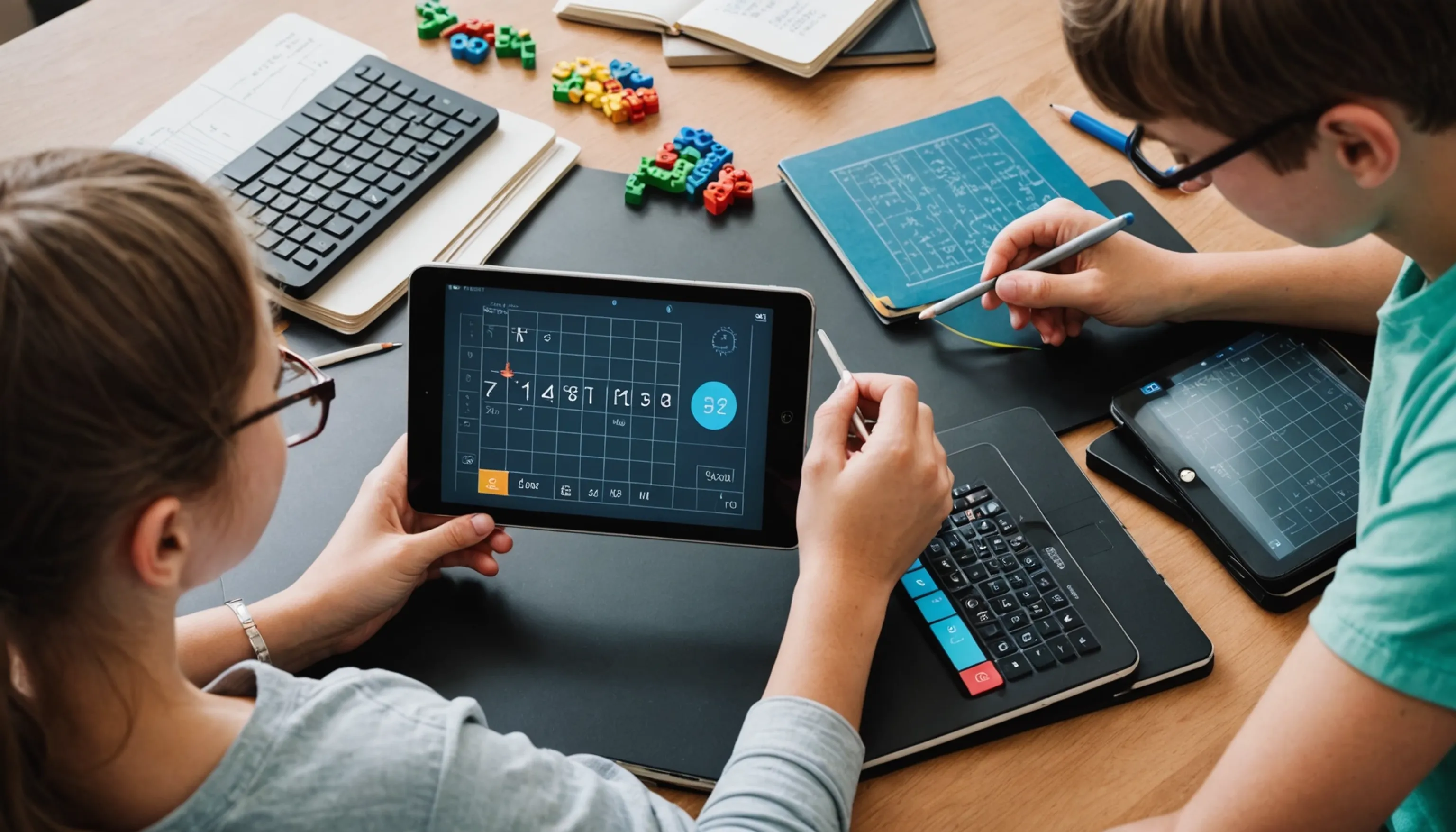How to Make Math Learning Fun
 HvWHenry van Wagenberg
HvWHenry van Wagenberg
Creative Ways to Make Math Learning Fun
Making math learning fun can significantly enhance students' engagement and understanding. Here are some creative ways to achieve this:
- Use storytelling: Incorporate math problems into stories that capture students' imaginations.
- Art integration: Combine math with art projects, like geometry in design or symmetry in painting.
- Real-world challenges: Present real-life scenarios where math is applicable, like budgeting or cooking, to show its relevance.
- Interactive activities: Organize hands-on activities, such as math scavenger hunts or escape rooms that require solving math problems to progress.
Incorporating Games into Math Lessons
Incorporating games into math lessons can transform a standard classroom into an engaging learning environment. This approach not only makes math fun but also helps students develop critical thinking and problem-solving skills.
Here are some effective ways to integrate games into math lessons:
- Board Games: Utilize popular board games, such as Monopoly or Yahtzee, to teach concepts like probability, counting, and strategic thinking. Modify the rules to incorporate specific math challenges.
- Card Games: Simple card games like War or Uno can be adapted to practice addition, subtraction, or even multiplication. Create custom cards that require solving math problems to win.
- Online Math Games: Leverage technology by introducing educational websites and apps that offer interactive math games. Platforms like Kahoot! and Prodigy engage students with quizzes and challenges that can be played individually or in teams.
- Math Jeopardy: Create a Jeopardy-style game where students answer math questions in various categories. This promotes teamwork and healthy competition while reinforcing math concepts.
- Escape Rooms: Design a classroom escape room where students solve math puzzles to unlock clues and eventually “escape.” This immersive experience encourages collaboration and critical thinking.
By incorporating games into math lessons, educators can foster a positive attitude towards math and motivate students to participate actively in their learning journey.

Using Technology to Enhance Math Learning
Using technology to enhance math learning can significantly improve student engagement and understanding. With the integration of various digital tools, educators can create a dynamic learning environment that meets the diverse needs of teenagers.
Here are some effective ways to incorporate technology into math lessons:
- Interactive Software: Programs like GeoGebra and Desmos allow students to visualize mathematical concepts, such as graphs and geometric figures. These tools enable hands-on exploration, making abstract ideas more tangible.
- Online Tutorials: Websites like Khan Academy and YouTube offer a plethora of video tutorials that break down complex math topics into manageable segments. Students can learn at their own pace, revisiting videos as needed for better understanding.
- Math Apps: Mobile applications like Photomath and Mathway provide instant solutions to math problems. These apps not only help students check their work but also offer step-by-step explanations, fostering independent learning.
- Virtual Learning Environments: Platforms such as Google Classroom or Microsoft Teams facilitate collaborative projects and discussions. Teachers can assign math tasks, share resources, and provide real-time feedback, enhancing communication and learning.
- Gamification: Incorporate math games and challenges using apps like Prodigy or Kahoot! to create a fun and competitive atmosphere. This method encourages participation while reinforcing essential skills.
By leveraging technology in math education, teachers can make learning more interactive, accessible, and enjoyable for teenagers, ultimately fostering a deeper appreciation for the subject.
Practical Applications of Math in Real Life
Understanding the practical applications of math in real life can significantly enhance students' appreciation for the subject. Math is not just about numbers; it plays a crucial role in everyday activities. For instance, when shopping, individuals use math to calculate discounts, compare prices, and manage budgets. In cooking, precise measurements and conversions are essential for recipe success. Additionally, professions like engineering, architecture, and finance rely heavily on mathematical concepts. By showcasing these real-life scenarios, educators can help teenagers see the relevance of math in their daily lives, motivating them to engage more deeply with the subject.

Math Projects that Engage Teenagers
Engaging teenagers through math projects can make learning more interactive and enjoyable. These projects not only reinforce mathematical concepts but also encourage creativity, critical thinking, and collaboration.
Here are several math project ideas that can captivate students:
- Budgeting Project: Have students create a budget for a hypothetical event, such as a birthday party or a school dance. They can research costs, allocate funds, and determine how to stay within budget, applying addition, subtraction, and multiplication skills in a real-world context.
- Statistics and Surveys: Students can conduct surveys on topics of interest to their peers and analyze the results. They can represent their findings using graphs, charts, or infographics, allowing them to explore concepts like mean, median, and mode.
- Geometry in Architecture: Assign students to design a blueprint for a small building or park. They will need to apply geometric concepts to ensure accurate measurements and proportions, using tools like graph paper or design software.
- Math in Nature: Encourage students to explore patterns in nature, such as Fibonacci sequences in flowers or symmetry in leaves. They can create presentations or posters to showcase their findings, connecting math to the natural world.
- Math Art: Integrate art with math by having students create geometric designs or fractals. This project allows them to explore shapes, angles, and symmetry while expressing their creativity.
These engaging math projects can foster a deeper understanding of mathematical concepts while making learning enjoyable and relevant for teenagers.
Field Trips that Highlight Math Concepts
Field trips are an excellent way to reinforce math concepts while providing students with hands-on experiences. These outings can help teenagers see the real-world applications of math, making the subject more relatable and engaging.
Here are some field trip ideas that highlight math concepts:
- Science Museums: Many science museums feature exhibits that explore mathematical principles. Students can engage in interactive displays that illustrate concepts like symmetry, geometry, and statistics, allowing them to see math in action.
- Local Architecture Tours: Organize a tour of local buildings or landmarks. Students can analyze architectural designs, focusing on geometric shapes, measurements, and proportions. This experience connects math to real-world structures and enhances their spatial reasoning skills.
- Financial Institutions: Visiting a bank or credit union can provide insights into financial literacy. Students can learn about budgeting, interest rates, and loans, applying mathematical concepts to real-life financial scenarios.
- Botanical Gardens: Take students to a botanical garden to explore the Fibonacci sequence in nature. They can observe patterns in flowers and leaves, making connections between math and the natural world while discussing concepts like ratios and proportions.
- Amusement Parks: A trip to an amusement park can be both fun and educational. Students can analyze ride statistics, calculate wait times, and explore concepts like probability and statistics based on ride capacity and visitor flow.
By organizing field trips that highlight math concepts, educators can provide students with valuable experiences that deepen their understanding and appreciation of mathematics in everyday life.
Encouraging Group Work and Collaboration in Math
Encouraging group work and collaboration in math classes can significantly enhance learning outcomes for teenagers. Collaborative activities allow students to share diverse perspectives and problem-solving strategies, fostering a deeper understanding of mathematical concepts. For example, organizing group projects where students tackle complex problems together can help them learn to communicate effectively and develop critical thinking skills. Additionally, using cooperative learning strategies, such as peer tutoring or math circles, promotes a sense of community and support among students. Ultimately, collaboration not only makes math more enjoyable but also prepares students for real-world teamwork situations.
Benefits of Group Learning in Math
Group learning in math offers numerous benefits that can enhance students' understanding and enjoyment of the subject. When teenagers collaborate, they not only share knowledge but also develop essential skills that contribute to their overall academic success.
Here are some key benefits of group learning in math:
- Enhanced Understanding: Working in groups allows students to explain concepts to one another, reinforcing their understanding. When they articulate their thought processes, it helps clarify their own understanding of the material.
- Diverse Perspectives: Group work exposes students to different problem-solving strategies and approaches. This diversity can lead to innovative solutions and a richer comprehension of mathematical concepts.
- Improved Communication Skills: Collaborating with peers fosters effective communication. Students learn to express their ideas clearly, listen actively, and provide constructive feedback, which are vital skills both in and out of the classroom.
- Increased Motivation: Working in a group can create a sense of accountability and motivation. Students are often more willing to engage with the material when they know their peers are counting on them, leading to a more productive learning environment.
- Social Skills Development: Group learning encourages teamwork and cooperation. Students learn to navigate group dynamics, resolve conflicts, and appreciate the value of working together towards a common goal.
Incorporating group learning in math education not only enhances students' mathematical skills but also prepares them for future collaborative endeavors, making it a vital component of effective teaching.
Creating a Positive Learning Environment
Creating a positive learning environment is essential for fostering student engagement and success in math classes. A supportive atmosphere encourages teenagers to take risks, express their ideas, and develop a love for learning. Here are several strategies to cultivate such an environment:
- Establish Clear Expectations: Set clear guidelines and expectations for behavior and academic performance. When students understand what is expected of them, they feel more secure and are better able to focus on learning.
- Encourage Open Communication: Foster a classroom culture where students feel comfortable asking questions and sharing their thoughts. Use techniques like think-pair-share or group discussions to promote dialogue and encourage students to voice their opinions.
- Celebrate Achievements: Recognize and celebrate both individual and group achievements. This can be done through verbal praise, certificates, or display boards showcasing student work. Celebrating successes boosts confidence and motivation.
- Incorporate Variety: Use a mix of teaching methods, including hands-on activities, group projects, and technology integration. Variety keeps lessons interesting and caters to different learning styles, making it easier for all students to engage.
- Build Relationships: Take time to get to know your students personally. When they feel valued and understood, they are more likely to participate actively in class discussions and activities.
By implementing these strategies, educators can create a positive learning environment that not only enhances students’ math skills but also promotes a lifelong love of learning.
